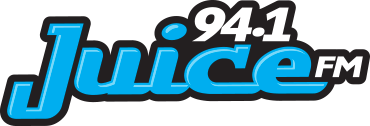With recent warm temperatures and drier-than-average conditions causing local snowpacks to shrink rapidly, Kootenay residents are urged to be extra cautious when conducting open burns and to follow responsible burning practices.
In April, there were two instances in the region (one east of Grand Forks and one in Nelson) where backyard pile burning was conducted, but a shift in weather conditions caused the flames to get out of control.
The BC Wildfire Service says it’s the responsibility of everyone to be aware of current fire prohibitions and restrictions and to conduct open burning safely, in accordance with regulations.
Additionally, the fire service urges anyone who conducted a Category 2 or 3 pile burn over the fall and winter to check their burn site(s) and ensure they are fully extinguished.
“As we transition into the spring with warming temperatures, everybody is reminded to check any of their winter burn piles to see if anything has ‘overwintered,’ which means it’s burned in the ground where you can’t see it,” explained Meghan Graceffo, information officer with the Southeast Fire Centre.
Piles that haven’t been fully extinguished are susceptible to re-emerging now that the weather has warmed up. Graceffo noted that it’s during this period – after the snow melts, but before green-up – that the dead grass, leaves, and fine fuels are really dry and easy to catch fire.
“That’s why it’s so important that you stay with a fire until it’s fully extinguished. You don’t ever leave anything unattended to ensure it’s well taken care of.”
There are currently no burning prohibitions in place within the Southeast Fire Centre, but Graceffo says a Category 3 open burning prohibition could come as soon as May.
“Fire bans are issued depending on a bunch of different factors. We try to hold off as long as we can, but really, it comes down to how dry it is, how susceptible the fuels are to fire, and the weather. Usually, we might get a Category 3 ban sometime in May, but we don’t generally know until the week we issue it.”
If you intend to light a Category 3 fire, you must first obtain a burn registration number. You can find detailed instructions on how to register for a burn number here: Burn Registration.
If a Category 3 fire has not been registered, or if the registration number has expired, you may be found in violation of the Wildfire Act and Regulations.
Before lighting a fire of any size, be aware of current and forecasted weather conditions, as well as any prohibitions and restrictions in your area.
Always check with local governments, as they may have bylaws that prohibit or restrict burning within their jurisdiction.
Kootenay wildfire outlook
Graceffo says the region’s drought conditions this spring have improved from last year, although April has been a bit dry.
“Our fire weather forecasters are saying that currently, the drought conditions have improved over last year, which is great. The key to our 2025 wildfire season, though, is going to be how much rain we receive in May and June leading into the core fire season.”
Precipitation amounts and duration throughout June will largely determine the wildfire outlook, specifically influencing the length and intensity of the core wildfire season.
That said, Graceffo says May is a perfect time to fire-smart your property and get prepared for what the wildfire season could look like.
“We live in an area that’s surrounded by forests, so it’s good to make sure that you take a little bit of time in the spring to get your home and where you live ready for anything that could happen, including things like go bags and all those little items.”
More information about open burning can be found here.







